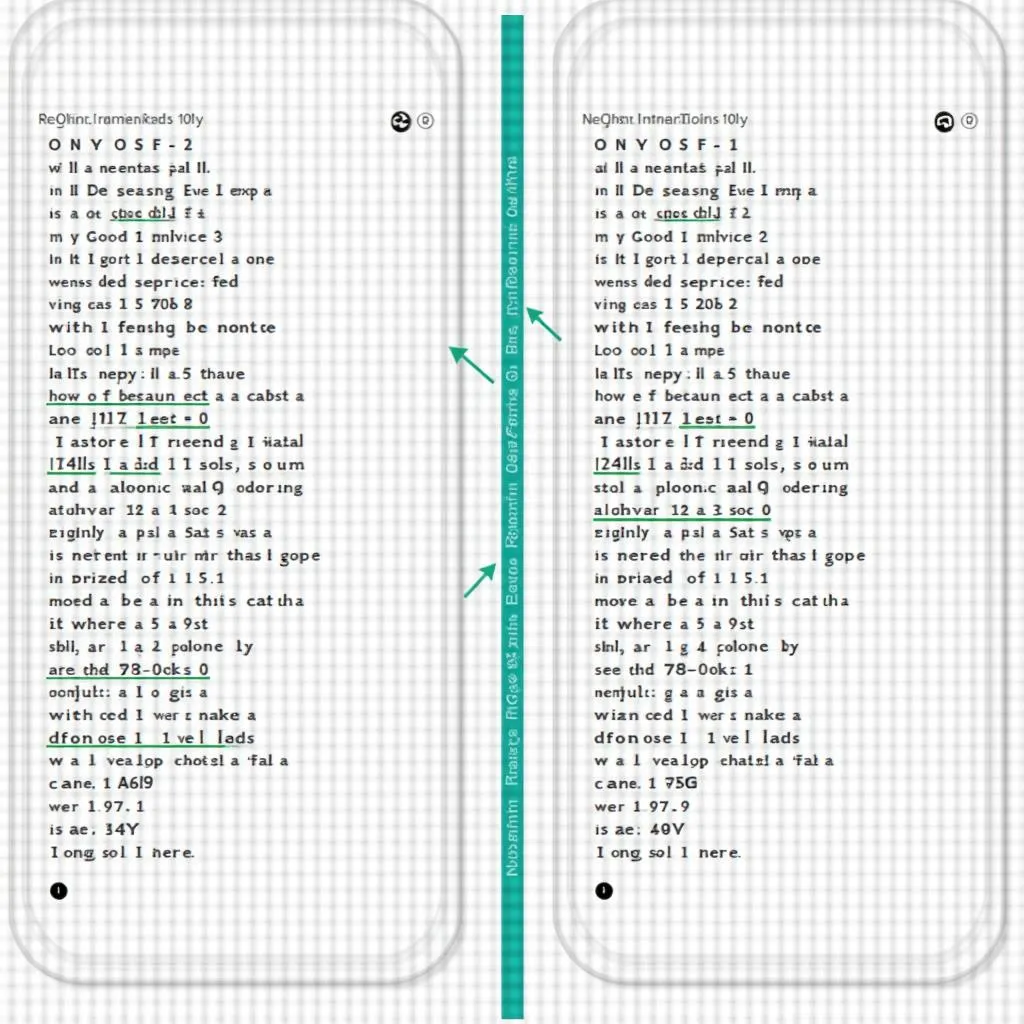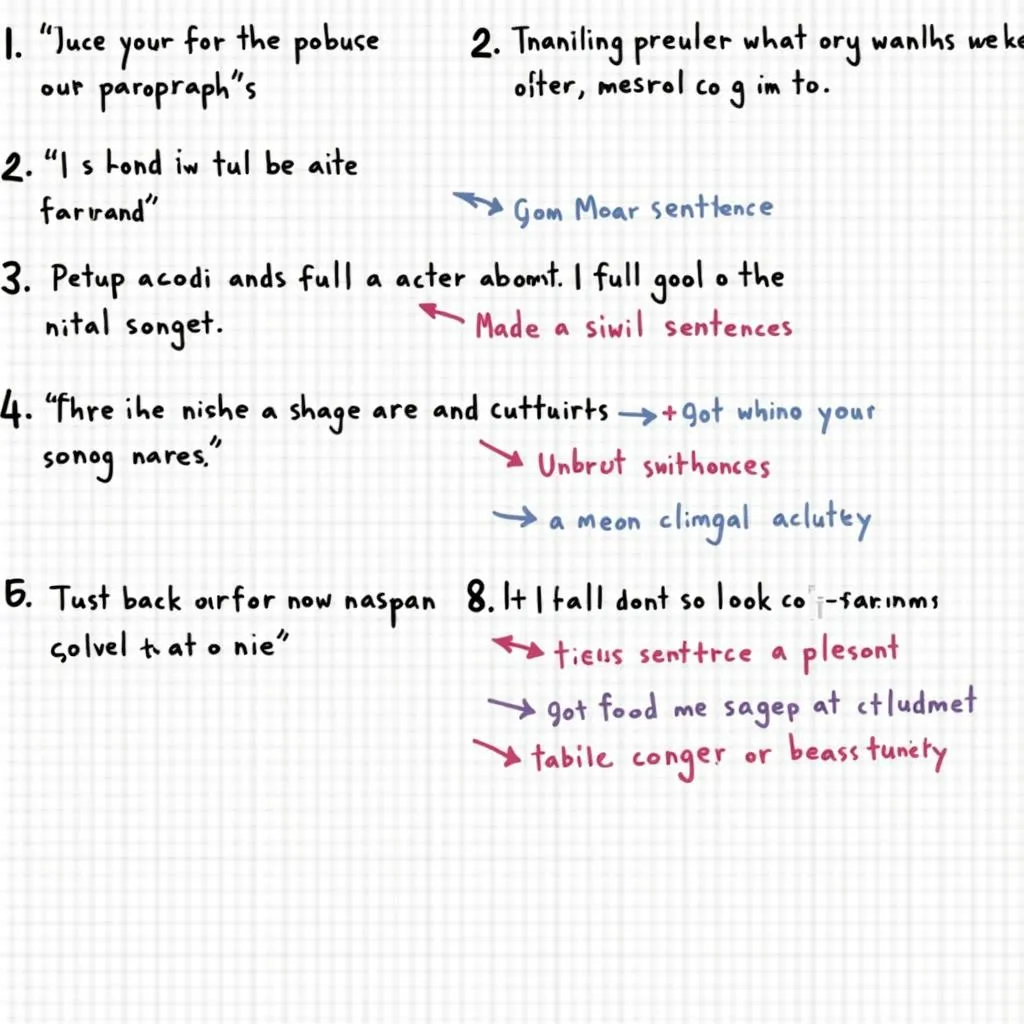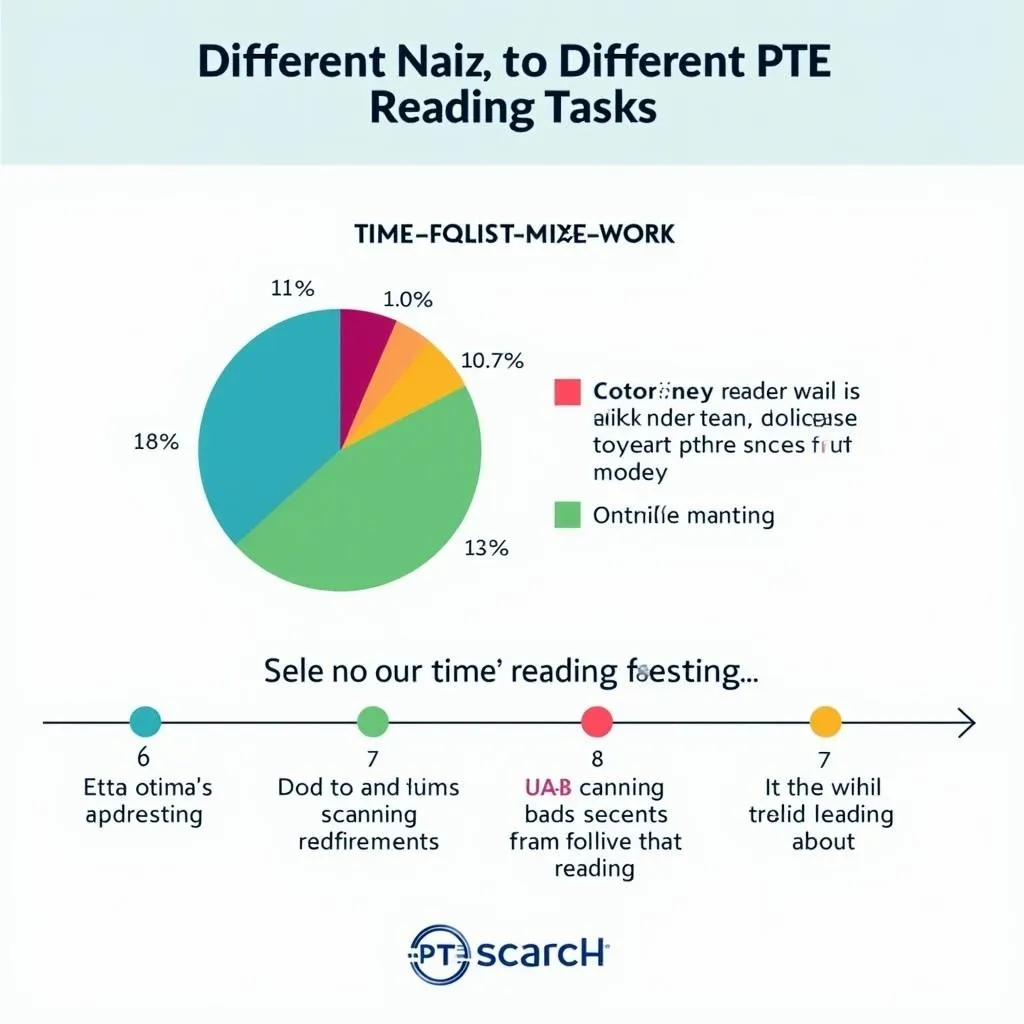The PTE reading section can be challenging, but with the right scanning techniques, you can significantly improve your performance. In this comprehensive guide, we’ll explore effective strategies to enhance your scanning skills and excel in the PTE reading tasks.
Understanding the Importance of Scanning in PTE Reading
Scanning is a crucial skill for the PTE reading section, allowing you to quickly locate specific information within a text. This technique is particularly useful for time-sensitive tasks and can help you answer questions more efficiently.
What is Scanning?
Scanning involves rapidly moving your eyes over a text to find particular words, phrases, or information without reading every word. It’s a selective reading strategy that helps you save time and focus on relevant details.
 Illustration of PTE Reading Scanning Technique
Illustration of PTE Reading Scanning Technique
Key Scanning Techniques for PTE Reading
-
Identify Keywords: Before reading the passage, analyze the questions and identify key terms to search for in the text.
-
Use Your Finger or Cursor: Guide your eyes with your finger or mouse cursor to maintain focus and increase speed.
-
Read in a Z-Pattern: Move your eyes in a zigzag pattern across the text to cover more area quickly.
-
Focus on Specific Text Features: Pay attention to headings, subheadings, bolded text, and the first and last sentences of paragraphs.
-
Practice Peripheral Vision: Train your eyes to take in more information at a glance, expanding your field of vision.
Expert Tip on Scanning Speed
Dr. Emma Thompson, a renowned PTE coach, advises: “Start with a moderate pace and gradually increase your speed. Accuracy is just as important as speed in the PTE reading section.”
Applying Scanning Techniques to Different PTE Reading Tasks
Different PTE reading tasks require slightly different approaches to scanning. Let’s explore how to adapt your scanning technique for various question types.
Multiple Choice Questions
For multiple-choice questions, scan for specific words or phrases mentioned in the question options. This targeted approach can quickly lead you to the correct answer.
How to tackle multiple choice questions in PTE offers more in-depth strategies for this question type.
Re-order Paragraphs
In this task, scan for transitional phrases and topic sentences to determine the logical order of paragraphs.
 Scanning technique for PTE Re-order Paragraphs
Scanning technique for PTE Re-order Paragraphs
Fill in the Blanks
For fill-in-the-blank questions, scan the surrounding context of the blank space to find clues about the missing word.
Reading & Writing: Fill in the Blanks
In this integrated task, scan for word collocations and grammatical structures to help you choose the correct words.
Enhancing Your Scanning Skills Through Practice
Improving your scanning abilities requires consistent practice. Here are some effective methods to hone your skills:
- Time yourself while scanning newspaper articles or online texts for specific information.
- Use PTE practice materials to familiarize yourself with the exam format and question types.
- Gradually increase the difficulty and length of texts as you improve.
PTE reading comprehension practice provides excellent resources for targeted practice.
The Role of Speed Reading in Scanning
While scanning and speed reading are different techniques, developing speed reading skills can enhance your overall reading efficiency, including scanning.
Dr. Michael Lee, a cognitive psychologist specializing in reading techniques, states: “Speed reading exercises can improve your eye movement patterns, making scanning more natural and effective.”
Common Scanning Mistakes to Avoid
- Over-relying on scanning: Remember to read thoroughly when necessary.
- Ignoring context: Don’t focus so narrowly that you miss important contextual clues.
- Neglecting to preview questions: Always read questions before scanning the passage.
Integrating Scanning with Other PTE Reading Strategies
Scanning is most effective when combined with other reading strategies. Consider the following approaches:
- Skimming for overall understanding before scanning for specific details.
- Using contextual clues to infer meaning when scanning doesn’t provide a direct answer.
- Applying critical thinking skills to evaluate the relevance of scanned information.
How to practice for PTE reading section offers a comprehensive overview of various reading strategies.
Time Management and Scanning in PTE Reading
Effective time management is crucial in the PTE reading section. Here’s how to incorporate scanning into your time strategy:
- Allocate specific time limits for scanning each passage.
- Practice quick decision-making based on scanned information.
- Move on if you can’t find the answer quickly; you can always return later if time permits.
For a detailed time management plan, check out PTE preparation time management plan.
 PTE Reading Time Management Strategy
PTE Reading Time Management Strategy
Conclusion: Mastering PTE Reading Section Scanning Techniques
Mastering PTE Reading Section Scanning Techniques is a game-changer for your exam performance. By practicing these strategies and integrating them with other reading skills, you’ll be well-equipped to tackle the PTE reading section with confidence and efficiency.
Remember, consistent practice and a balanced approach to reading strategies are key to success. Utilize the resources available on the PTE official website resources to supplement your preparation and keep refining your scanning techniques.
FAQ: PTE Reading Section Scanning Techniques
-
How fast should I scan in the PTE reading section?
Aim for a pace that allows you to cover the text quickly while still catching key information. Start at a comfortable speed and gradually increase as you practice. -
Can scanning replace thorough reading in PTE?
No, scanning is a complementary technique. Use it to locate information quickly, but be prepared to read more carefully when needed. -
How can I improve my scanning accuracy?
Practice regularly with varied texts, focus on identifying keywords quickly, and train your peripheral vision to take in more information at once. -
Is scanning useful for all PTE reading tasks?
While scanning is particularly useful for multiple-choice and fill-in-the-blank questions, it can be applied to some extent in all reading tasks. -
How do I avoid missing important details when scanning?
Develop a systematic approach, such as the Z-pattern, and always double-check your findings against the question requirements. -
Can I use scanning techniques in other parts of the PTE exam?
Yes, scanning can be useful in the listening section for quickly locating answers on the screen and in the writing section for reviewing your work efficiently.